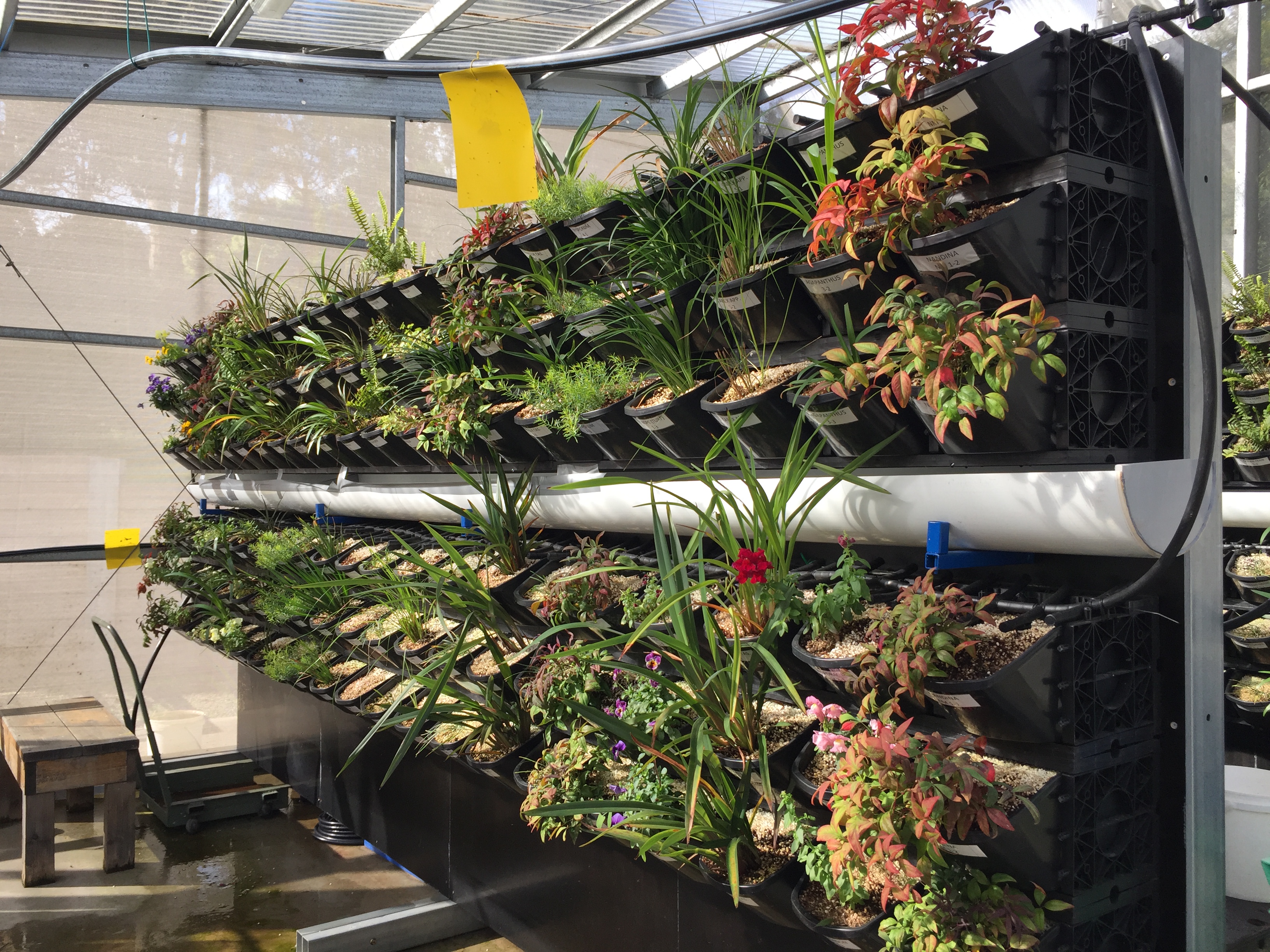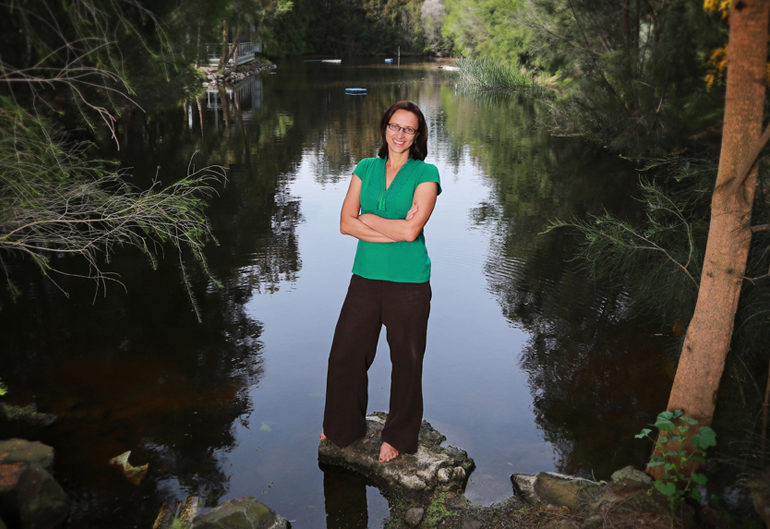In the world’s driest inhabited continent, a bit of greenery seems like a luxury in the height of summer. But one Australian engineer is looking at green infrastructure as a way get plants growing in urban areas without wasting a drop of precious water.
Green walls are growing in cities across the world, and while they’re a nice touch to urban jungles, they are also water hungry. In times of plenty, that’s not as much of a concern. But as urban areas strive to be water wise, cultivating green infrastructure that doesn’t waste water is a lush prospect.
Trying to solve this problem is Ana Deletic, Pro Vice-Chancellor (research) at the University of New South Wales (UNSW) and previously Associate Dean, Research, of the Faculty of Engineering at Monash University.
Currently, green walls are ornamental only. Creating a self-sufficient green wall that doesn’t require tap access led Deletic to thinking of ways to engineer a system that uses greywater and stormwater instead, thus converting them from “beautiful water users to beautiful water producers”.
A sustainability issue

Deletic is drawing on her extensive background in urban water management to engineer a vegetated water filter designed to harness natural processes to reduce, reuse and recycle water.
Deletic specialises in water engineering and is a long-standing figure in the urban water management community. Her interest in vertical biofilters stemmed from working extensively with rain gardens in Melbourne (which won her a Victoria Science Prize in 2012).
Rain gardens are great at treating water runoff, Deletic said, but they have a few downsides. For one, they rely solely on water runoff, so seasonal weather variations could mean plants suffer during dry times.
They also take up a lot of space, and in a city CBD every square centimeter is precious real estate. Placing them near walls and using climbers means these features can be squeezed into tight spaces, but Deletic wanted to find a way to put them to work as water filtration systems for non-potable use.
This led to her moving from rain gardens to exploring options for vertical landscapes and hybrid systems that use a mix of greywater when it’s dry and stormwater when it’s wet.
“Most green walls are fed using potable water, but here in Australia this isn’t sustainable. One square metre of green wall in Perth on a hot day can use around 20 litres of water. An average-sized school in Melbourne with a green wall built in the traditional way will use as much water as the whole school,” she said.
The water cycle

Nitrogen and phosphorus in soaps and shampoos are yummy food for plants, but in runoff they can create unwanted algae or aquatic plant growth that chokes waterways. Water treatment plants remove these nutrients from greywater, but that’s an energy-intensive process compared to a biofilter.
In her system – dubbed a ‘green-blue wall’ – water percolates via gravity through an engineered media and collects at the bottom for non-potable applications.
“What if every time you shower, that water flows down the green wall where it’s filtered, collected at the bottom and then used for non-potable uses,” she said.
Getting the mix just right is proving to be a challenge, though. The growing media needs to support plants, allow adequate water flow, cling well to various surface types and treat the water to a high standard.
“To make this work is not easy, but it’s low tech in the sense that it’s low energy and has a low environmental footprint.”
No two alike
Deletic sees green-blue walls as one outgrowth of increased interest in nature-based water treatment systems. It also represents a move from highly centralised, traditional water treatment systems to more decentralised ones.
Even back in the 90s, when she was doing her postgraduate studies, Deletic said sustainable water management was a big deal.
“There was recognition of it and how you can use these systems and other natural processes, integrate them into an urban environment and deliver multiple benefits,” she said.
“Some places call them water sensitive urban design, some say low-impact development or sponge cities – but regardless of what you name them, they’ve been around for a while.”
It’s too early to say whether her green-blue walls could one day overtake more conventional water treatment systems in urban areas; nature-based systems are still in their infancy by comparison.
“They are far from being robust to the point where you could put them in every building,” Deletic said.
For now, she is more than happy to go slow until the system is scalable, adaptable to any climate and has a proven track record.
Similar to her work with raingardens, she wants to develop a set of guidelines to govern how green-blue walls can be tailored to local climates for maximum effect.
“These are nature-based systems, which means they use local everything. If we developed guidelines for Sydney, it wouldn’t make sense to move them to Perth without serious research into local conditions. We have to tailor, test and validate them to local conditions.”
Multiple benefits
Living walls are already prized for their beautifying properties, and they’ve become popular in architecture because they fit in tight spaces where you can’t fit trees or other greenery. Some buildings in Australia have them, such as the interior of Lend Lease’s Global Headquarters in Sydney.

She doesn’t think her system will be a hard sell, but converting existing green walls into green-blue walls – or building new ones all together – depends on building local knowledge and incentive. Deletic is already looking into developing both.
The University of Western Australia conducted research on the value of raingardens and found that they have a marked effect on the values of surrounding real estate. Deletic believes green-blue walls will exert even greater influence.
“As a person who lives in an apartment with a green-blue wall, I would benefit from the water treatment, the heating and cooling effects, and the property value-add,” Deletic said.
Besides the benefit to users in terms of water use, green infrastructure contributes to liveable cities. Green spaces help mitigate the urban heat island effect and breathe some life back into concrete landscapes. Studies also show that exposure to green spaces improves public health.
“What’s great about these systems is they’re very versatile technologies that deliver water treatment, microclimate influence and urban design enhancement down to public health benefits.”
She is starting small with trials in her lab and pilot projects before working up to a viable, full-scale product. Now that she’s made the move from Melbourne to Sydney, Deletic said she wants to work towards more industry-research partnerships to educate the public about nature-based water treatment systems.
“I plan to work with urban planners, landscape architects and ecologists to deliver on that,” she said.
“I hope we can integrate more with local industry and build capacity to make this possible.”
Ana Deletic is one of create’s Most Innovative Engineers for 2017. Nominations are now open for the class of 2018. To nominate yourself or someone else, click here.







